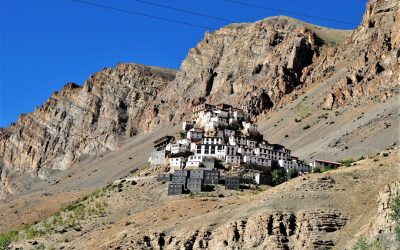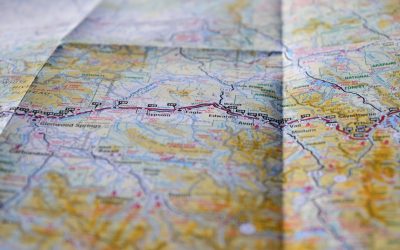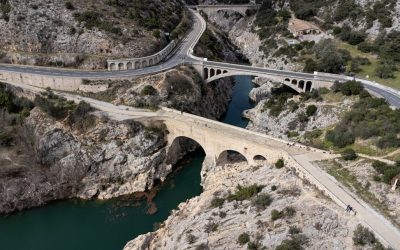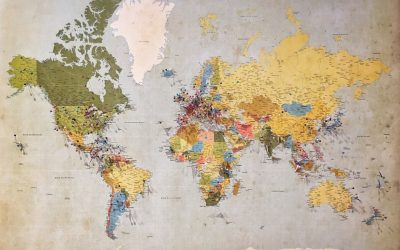Explore the World Through Geography, Natural Resources & Daily History
Clear, reliable and engaging guides that help you understand our planet — from UK geography education to global natural resources and On This Day history events.
Explore, discover, and learn about the wonders of our world! At Earth Site, we’re passionate about bringing geography, history, and science to life for curious minds of all ages. Whether you’re delving into historical events, uncovering the mysteries of the natural world, or seeking interactive resources, you’re in the right place.
Here, you can uncover the stories behind historical events, explore the natural wonders of our planet, and gain valuable insights into how the Earth’s systems shape our daily lives. From the towering peaks of mountain ranges to the far-reaching impacts of human innovation, we aim to make every topic both engaging and informative.
Start your journey of discovery with us today, and let’s make learning an adventure!
What We Cover
Earth Site brings together engaging and accessible educational content designed to help you understand the world, its history, and its natural systems.
🌍 Geography Education (UK & Worldwide)
We publish clear, easy-to-understand geography resources for students, teachers and curious learners. Our guides support geography education in the UK and cover physical geography, climate, ecosystems, population, and global development.
⛏️ Natural Resources & Environmental Geography
Explore detailed country profiles covering natural resources, mining, energy, geology and global environmental challenges. We show how nations manage minerals, water, land and ecosystems, and why these resources matter.
📅 On This Day in History
Every day has a story. Our On This Day history series features major events, anniversaries, traditions, and cultural milestones from around the world — with timelines, context, and fun facts.
TIMELINE
Natural Resources of Bhutan: Where Natural Resources are Located in Bhutan
Natural Resources of Bhutan: Where Natural Resources are Located in Bhutan Bhutan, a small landlocked country nestled in the eastern Himalayas, is known for its rich natural resources and pristine environment. With an area of approximately 38,394 square kilometres, Bhutan is blessed with diverse geographical features, including towering mountains, deep valleys, and lush forests. These natural resources play a crucial role in the country’s economy and culture, providing livelihoods for its people and attracting tourists from around the world. Summary Bhutan is a country rich in natural resources, including forests, minerals, water, agriculture, wildlife, energy, land, and marine resources. The forest resources of Bhutan are extensive and well-managed, with over 70% of the country covered in forest. Bhutan’s mineral resources include coal, limestone, and dolomite, but the country is committed to sustainable mining practices. Water resources are abundant in Bhutan, with many rivers and streams providing hydroelectric power and irrigation for agriculture. Agriculture is a major sector of the Bhutanese economy, with crops including rice, maize, wheat, and potatoes. Conservation efforts are underway to promote sustainable farming practices. Forest Resources of Bhutan Bhutan is often referred to as the “Land of the Thunder Dragon” due to its dense forest cover. Forests cover more than 70% of the country’s land area, making it one of the most forested countries in the world. These forests are home to a wide variety of flora and fauna, including endangered species such as the Bengal tiger, snow leopard, and black-necked crane. The importance of forests in Bhutan cannot be overstated. They provide a range of ecosystem services, including carbon sequestration, water regulation, and...
Cultural or Historical Sites of Bhutan: Important Cultural Landmarks or Historical Sites In Bhutan
Introduction Bhutan, a small landlocked country nestled in the Eastern Himalayas, is known for its rich cultural heritage and historical significance. This article will explore some of the most iconic and important sites in Bhutan, highlighting their significance in Bhutanese culture and the importance of preserving them for future generations. The Magnificent Tiger’s Nest Monastery One of the most famous and breathtaking sites in Bhutan is the Tiger’s Nest Monastery, also known as Paro Taktsang. Perched on a cliffside at an elevation of 3,120 meters, this monastery holds great historical and religious significance. According to legend, Guru Rinpoche, the founder of Tibetan Buddhism, flew to this location on the back of a tigress and meditated in a cave for three years, three months, three weeks, three days, and three hours. To reach the Tiger’s Nest Monastery, visitors must embark on a challenging trek that takes approximately two to three hours. The trail winds through pine forests and offers stunning views of the surrounding mountains and valleys. The final stretch involves climbing steep stairs carved into the cliffside. Despite the physical exertion required, the reward is well worth it as visitors are greeted with a breathtaking view of the monastery clinging to the edge of the cliff. The Tiger’s Nest Monastery holds immense cultural and religious significance for the Bhutanese people. It is considered one of the holiest sites in Bhutan and is a place of pilgrimage for Buddhists from all over the world. The monastery houses several temples and shrines dedicated to Guru Rinpoche and other Buddhist deities. It serves as a spiritual retreat for monks and provides a...
Population Density of Benin
Benin, officially known as the Republic of Benin, is a country located in West Africa. It is bordered by Togo to the west, Nigeria to the east, Burkina Faso and Niger to the north, and the Atlantic Ocean to the south. With a population of approximately 12 million people, Benin is one of the most densely populated countries in Africa. Population density refers to the number of people living in a specific area, usually measured in terms of persons per square kilometer. Understanding population density is important as it provides insights into the distribution of people within a country and can help inform policies and strategies for sustainable development. Summary Benin has a population density of 99 people per square kilometer. Population growth in Benin has been steadily increasing since the 1950s. Factors such as fertility rates, migration, and urbanization contribute to population density in Benin. Urbanization has led to a concentration of population density in certain areas of Benin. There are regional variations in population density across Benin, with the south being more densely populated than the north. Historical trends in population growth in Benin Over the past few decades, Benin has experienced significant population growth. In 1960, when Benin gained independence from France, its population was around 2 million. Since then, the population has more than quintupled, reaching approximately 12 million in 2021. This rapid population growth can be attributed to several factors. Firstly, improvements in healthcare and sanitation have led to a decline in mortality rates, resulting in increased life expectancy. Additionally, high fertility rates have contributed to population growth, with an average of 4.9 children...
History of Benin
The Kingdom of Benin, located in present-day Nigeria, was one of the most powerful and influential states in African history. It existed from the 13th century until the late 19th century and played a significant role in shaping the political, economic, and cultural landscape of West Africa. The kingdom was known for its sophisticated political structure, thriving trade networks, and exceptional artistic achievements. However, it also faced challenges such as conflicts with European powers and the devastating impact of the transatlantic slave trade. Despite these challenges, the legacy of the Kingdom of Benin continues to endure, with efforts being made to preserve its cultural heritage and promote development in modern-day Benin. Summary The Kingdom of Benin was founded in the 13th century and was located in what is now Nigeria. Benin’s monarchy was highly centralized and the Oba held significant political power. Benin’s economy was based on trade, agriculture, and art, with the kingdom producing intricate bronze sculptures. The arrival of Europeans in the 15th century led to conflict and the eventual colonization of Benin. Benin experienced a golden age in the 16th century, with a flourishing of art, culture, and diplomacy. The Kingdom of Benin: Origins and Early History The Kingdom of Benin was founded around the 13th century by the Edo people. According to oral tradition, the first Oba (king) of Benin was Eweka I, who established his rule over the region. The early political structure of Benin was highly centralized, with power concentrated in the hands of the Oba. The Oba was considered a divine ruler and held absolute authority over his subjects. The kingdom was...
Terrain and Topography of Benin: mountains, valleys, and plains.
Benin, located in West Africa, is a country with a diverse and varied terrain. It is bordered by Togo to the west, Nigeria to the east, Burkina Faso to the north, and the Atlantic Ocean to the south. The country’s geography is characterized by mountains, valleys, coastal plains, plateaus, and river basins. Understanding the terrain and topography of Benin is crucial as it plays a significant role in shaping the country’s ecology, economy, and cultural heritage. Summary Benin has a diverse terrain and topography, ranging from mountainous regions to coastal plains and plateaus. The Atakora Mountains are a natural wonder of Benin, with peaks reaching over 6000 feet. Valleys in Benin are low-lying regions of the country, with the Pendjari Valley serving as a haven for wildlife. The coastal plains of Benin are a thriving agricultural region, while the Niger River Basin is a major source of water and agriculture. The Zou Plateau is a hub for economic activities in Benin, showcasing the country’s potential for growth and development. Overview of Benin’s Mountainous Regions Benin is home to several mountainous regions that contribute to its unique landscape. The mountains in Benin are primarily located in the northern part of the country, near the border with Togo. These regions are characterized by rugged terrain, steep slopes, and lush vegetation. The mountainous areas of Benin are important for their ecological significance as they provide habitats for a variety of plant and animal species. They also play a crucial role in the country’s economy, particularly in terms of tourism and agriculture. The Atakora Mountains: A Natural Wonder of Benin One of the...
Climate Zones of Benin: Different Climate Regions Of Benin
Benin, located in West Africa, is a country known for its diverse geography and climate. From the coastal areas to the north, Benin experiences a range of climate zones that have a significant impact on its agriculture and economy. Understanding these climate zones is crucial for farmers and policymakers to make informed decisions about crop selection and agricultural practices. In this article, we will explore the different climate zones in Benin, their characteristics, and the crops grown in each zone. Summary Benin has a diverse range of climate zones, including tropical, subtropical, equatorial, dry, humid, semi-arid, savannah, and coastal. The tropical climate zone is characterized by high temperatures and rainfall, with two distinct rainy seasons. The subtropical climate zone experiences cooler temperatures and less rainfall than the tropical zone, with a single rainy season. The equatorial climate zone has high temperatures and rainfall throughout the year, with no distinct dry season. The dry climate zone is characterized by low rainfall and high temperatures, with a single rainy season. Climate change is expected to have significant impacts on Benin’s climate zones, including increased temperatures, changes in rainfall patterns, and more frequent extreme weather events. The Tropical Climate Zone of Benin The tropical climate zone is characterized by high temperatures and abundant rainfall throughout the year. This climate zone covers a large part of southern Benin, including cities like Cotonou and Porto-Novo. The average temperature in this zone ranges from 25 to 30 degrees Celsius, with high humidity levels. In the tropical climate zone, crops such as bananas, pineapples, cocoa, and palm oil are grown. These crops thrive in the warm...
Political Boundaries of Benin: Provinces, Districts, or Historical Boundaries.
Benin, officially known as the Republic of Benin, is a country located in West Africa. It is bordered by Togo to the west, Nigeria to the east, Burkina Faso and Niger to the north, and the Atlantic Ocean to the south. Understanding the political boundaries of Benin is crucial for various reasons. Firstly, it helps in understanding the country’s governance structure and how power is distributed among different regions. Secondly, it provides insights into the historical and cultural factors that have shaped Benin’s political landscape. Lastly, it helps in analyzing the challenges and opportunities that arise from these boundaries for the country’s future development. Summary Benin’s political boundaries have evolved over time, from pre-colonial era to present day. Colonial era had a significant impact on Benin’s political landscape, with new boundaries and administrative divisions. Benin is currently divided into 12 provinces, each with its own administrative structure. Districts serve as local government structures within provinces, with elected officials and traditional authorities playing a role. Ethnic and regional tensions pose challenges to Benin’s political boundaries, with border disputes having implications for integration or fragmentation. Historical Boundaries of Benin: Pre-colonial Era In the pre-colonial era, Benin was a powerful kingdom with well-defined political boundaries. The kingdom of Benin was located in what is now southern Nigeria and southwestern Benin. It was ruled by a monarch known as the Oba, who held absolute power. The kingdom had a complex administrative system with various levels of political authority. The formation of political boundaries in pre-colonial Benin was influenced by several factors. Firstly, geographical features such as rivers and mountains played a role in...
Natural Resources of Benin: Where Natural Resources are Located in Benin
Natural Resources of Benin: Where Natural Resources are Located in Benin Benin, located in West Africa, is a country known for its rich and diverse natural resources. With a total land area of approximately 112,622 square kilometers, Benin is bordered by Togo to the west, Nigeria to the east, Burkina Faso and Niger to the north, and the Atlantic Ocean to the south. This geographical location provides Benin with a variety of natural resources, including agricultural land, minerals, water bodies, forests, energy sources, marine resources, and wildlife. Summary Benin has a variety of natural resources including agricultural, mineral, water, forest, energy, marine, and wildlife resources. Agriculture is the largest sector of Benin’s economy, with crops such as cotton, maize, and cassava being major exports. Mineral resources in Benin include limestone, marble, and gold, but the sector is largely underdeveloped. Benin has abundant water resources, including the Niger and Mono rivers, but access to clean water remains a challenge. Forest resources in Benin are threatened by deforestation and illegal logging, but efforts are being made to promote sustainable forestry practices. Energy resources in Benin are largely untapped, with the majority of the population relying on traditional biomass for cooking and heating. Benin’s marine resources include fish and shrimp, but overfishing and pollution are major threats to the sector. Wildlife resources in Benin include elephants, hippos, and primates, but poaching and habitat loss are major challenges. Benin’s natural resources have significant potential for tourism, but infrastructure and marketing efforts are needed to fully capitalize on this potential. Challenges facing Benin’s natural resource management include inadequate funding, weak governance, and climate change...
Cultural or Historical Sites of Benin: Important Cultural Landmarks or Historical Sites In Benin
Benin, located in West Africa, is a country with a rich cultural and historical heritage. From its ancient kingdoms to its vibrant traditions, Benin offers a wealth of experiences for those interested in exploring and learning about its past. By visiting the magnificent royal palaces, sacred forests, museums, historical sites, and authentic villages, visitors can gain a deeper understanding of Benin’s history and culture. Summary Benin has a rich cultural and historical heritage that is worth exploring. The royal palaces of Benin offer a glimpse into the kingdom’s past and are magnificent to behold. The sacred forests of Benin are an important part of the country’s traditional beliefs and practices. The Benin National Museum is a treasure trove of artifacts and artworks that showcase the country’s history and culture. The slave route and memorial are important sites that commemorate the tragic history of the transatlantic slave trade. The Magnificent Royal Palaces of Benin The royal palaces of Benin are not only architectural marvels but also hold great significance in the country’s history. These palaces were once the residences of the powerful kings of the Dahomey Kingdom, which ruled over Benin from the 17th to the 19th century. The palaces were not only symbols of power but also centers of administration and cultural activities. One notable palace to visit is the Royal Palace of Abomey, a UNESCO World Heritage Site. This palace complex consists of several interconnected buildings that showcase the grandeur and opulence of the Dahomey Kingdom. Each building has its own unique purpose, such as housing the king’s wives or serving as a place for religious ceremonies. The...
History of Belgium
Belgium, located in Western Europe, has a rich and complex history that spans thousands of years. From its early settlements and Roman invasion to its role in the European Union, understanding Belgium’s history is crucial to understanding its culture, politics, and society. This article will provide a comprehensive overview of Belgium’s history, highlighting key events and their impact on the country. Summary Belgium was settled by various tribes before the Roman invasion in 57 BC. The Flemish cities rose to power under Burgundian rule in the 15th century. The Spanish Habsburgs ruled Belgium during the Eighty Years’ War, leading to a divide between the north and south. The Austrian Netherlands saw the rise of the Enlightenment and the spread of new ideas. The Belgian Revolution in 1830 led to the formation of the Kingdom of Belgium. The Industrial Revolution brought about social and economic changes, leading to the rise of socialism. Belgium was occupied by Germany during World War I and played a key role in World War II, including the Battle of the Bulge. Post-war rebuilding led to the formation of the European Union, with Belgium as a founding member. The Early Settlements and Roman Invasion of Belgium Belgium’s history dates back to prehistoric times, with evidence of human settlements as early as the Paleolithic era. The region was inhabited by various Celtic tribes before the Roman invasion in the 1st century BC. The Romans established several settlements in what is now Belgium, including the city of Tournai. The Roman invasion had a significant impact on Belgium, bringing with it new infrastructure, trade routes, and cultural influences. The...
Population Density of Belize
Population density refers to the number of people living in a specific area, usually measured in terms of persons per square kilometer or square mile. It is an important indicator of how crowded or sparsely populated an area is and can provide insights into various social, economic, and environmental factors. In the case of Belize, a small country located in Central America, population density plays a significant role in shaping its development and sustainability. Belize’s population density is unique due to its small land area and diverse geography. With a total land area of approximately 22,970 square kilometers, Belize is one of the smallest countries in the region. However, despite its size, Belize has a relatively low population density compared to its neighboring countries. This is primarily due to its abundance of natural resources and protected areas, which limit the amount of land available for human settlement. Summary Belize has a relatively low population density compared to other countries in the region. Population density in Belize is calculated by dividing the total population by the land area. Belize’s total population is around 400,000, with a growth rate of 1.9% per year. The majority of Belize’s population lives in urban areas, with only 20% in rural areas. Factors influencing population density in Belize include economic opportunities, infrastructure, and natural resources. How Population Density is Calculated in Belize Population density is calculated by dividing the total population of an area by its land area. In the case of Belize, the formula used to calculate population density is as follows: Population Density = Total Population / Land Area The data sources used...
Terrain and Topography of Belize: mountains, valleys, and plains.
Belize, located on the eastern coast of Central America, is a small country with a diverse and unique terrain. It is bordered by Mexico to the north and Guatemala to the west and south. With an area of approximately 22,970 square kilometers, Belize may be small in size, but it is rich in natural beauty and biodiversity. Understanding Belize’s terrain and topography is crucial for appreciating the country’s diverse ecosystems and the activities it offers. Summary Belize’s terrain and topography is diverse and includes mountain ranges, valleys, coastal plains, barrier reefs, karst landscapes, and lowlands. The Maya and Cockscomb Mountains offer opportunities for hiking and exploring ancient Maya ruins. The Macal and Belize River Valleys are home to lush vegetation and wildlife, and offer activities such as river tubing and kayaking. The coastal plains of Belize are ideal for agriculture and tourism, with popular destinations such as Placencia and Hopkins. The barrier reef and atolls offer world-class snorkeling and diving opportunities, with diverse marine life and underwater caves to explore. The Mountain Ranges of Belize: Exploring the Maya and Cockscomb Mountains Belize is home to two main mountain ranges: the Maya Mountains and the Cockscomb Mountains. The Maya Mountains, located in the southern part of the country, are part of the larger Central American mountain system. They are characterized by rugged peaks, deep valleys, and dense rainforests. The highest peak in Belize, Victoria Peak, can be found in this range. The Cockscomb Mountains, also known as the Jaguar Preserve, are located in southern Belize as well. This protected area is home to a large population of jaguars and other...











